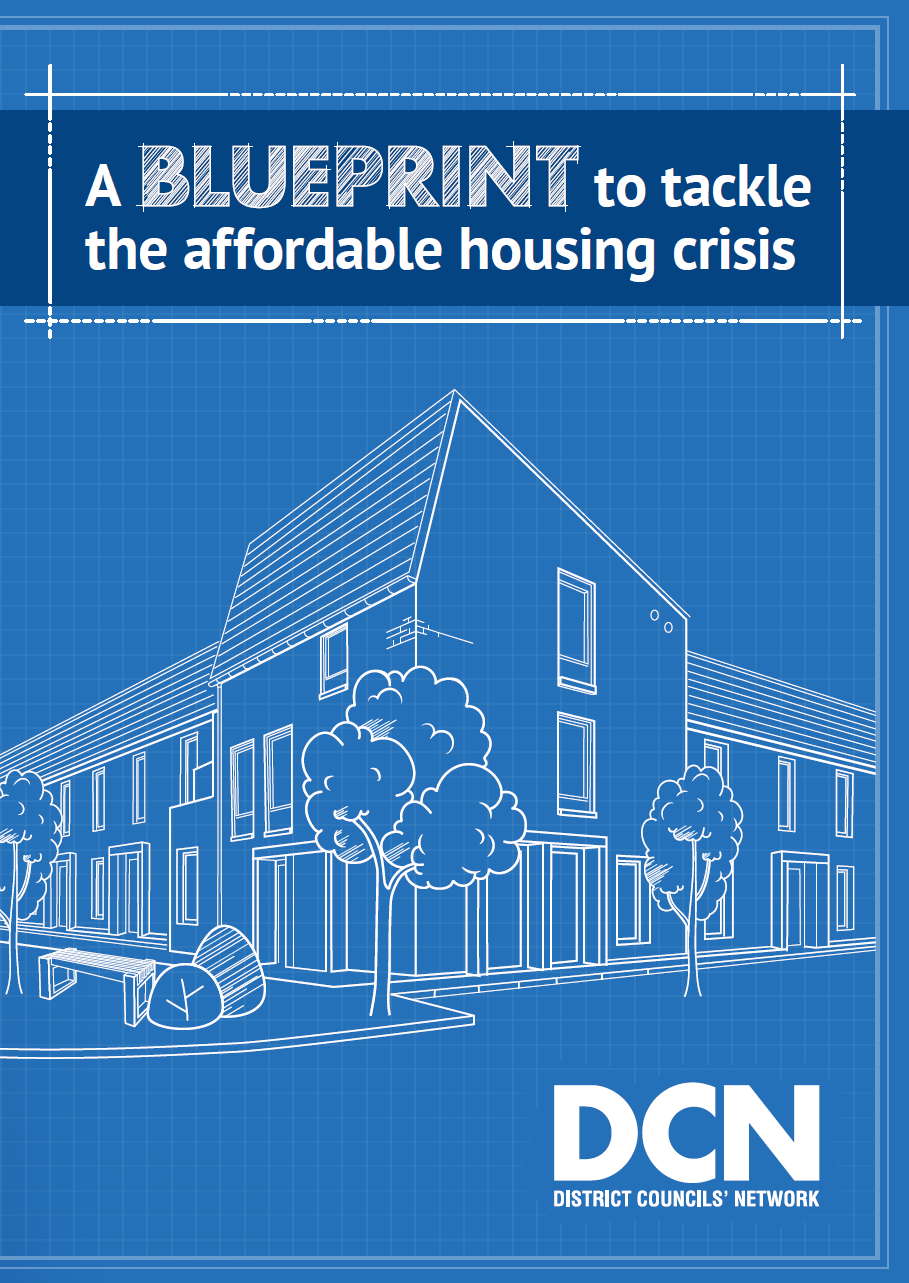England: Three reforms ‘could deliver 100,000 affordable homes’

A landmark report has been published that sets out a comprehensive plan to tackle England’s housing crisis, including three reforms which would alone provide 100,000 affordable homes.
While the housing crisis in major cities traditionally dominates headlines, the report from the District Councils’ Network (DCN) advocates a series of measures to ease the spiralling housing crisis outside of the largest conurbations.
It comes as the social housing waiting list in district council areas has swollen to 303,000 households – almost equivalent in size to the population of Manchester. Meanwhile, social housing completions in the 164 district council areas have plummeted from an average of 126,000 homes annually in the decades after World War Two to just 9,866 in 2023/24.
Just three changes would have a huge impact:
- The potential exists to build an additional 88,000 council homes in district areas by raising the threshold at which councils must set up a Housing Revenue Account. This is the complicated bureaucracy currently required to oversee large-scale council housing which piles administration costs onto councils who would otherwise be enthusiastic social housing builders. Reducing the bureaucracy removes a barrier to progress.
- An extra 8,300 affordable homes could be built annually in rural areas by closing planning loopholes that allow developers to side-step commitments to include affordable housing in new developments.
- 8,688 empty properties could be brought back into use at just 10% of the cost of new-build housing by giving councils greater powers to take action.
Cllr Hannah Dalton, housing spokesperson for the District Councils’ Network, said: “The housing crisis is wrecking lives and destroying communities – teaching assistants and nurses can’t afford to live where they work, young people are priced out of the place they call home, and older residents are trapped in houses too big for them to manage. This is as true in district council areas as elsewhere.
“District councils want to tackle the affordable housing crisis head-on. We have the local knowledge, the relationships, and the drive to deliver, but what we need now are the powers and resources to get the job done. The fact that just three changes could deliver over 100,000 homes demonstrates the scale of what’s possible.
“The current Government requirement to set up a complicated and expensive bureaucracy if a council has more than 200 homes thwarts many from building new council homes. If the threshold to set up a Housing Revenue Account was raised to 1,000 homes, the potential exists to build 88,000 new homes.
“We need the teeth to force developers to honour commitments to include affordable homes in developments and the ability to take on empty homes. Such measures can bring about a step change in ending the housing crisis across England.”
Responding to the report, Matt Downie, chief executive of homelessness charity Crisis, said: “No-one should be forced to endure the trauma and indignity of homelessness, especially when we have tangible solutions to provide thousands with a safe and secure home.
“Years of government inaction has created a chronic shortage of social housing which has left our housing system at breaking point. In our services we hear daily the challenges people face from being turned away with nowhere to go – people forced to heat up food on radiators while others have no option but to move hundreds of miles away from their jobs, schools and support networks to have a roof over their head.
“With homelessness at record levels, it’s clear there’s no time to waste. It’s crucial that the Westminster government takes note of these recommendations for both its cross-departmental strategy to end all forms of homelessness and its long-term housing plan. As these are the changes we need to see, so that everyone has a safe place to call home.”
The Blueprint, which draws on extensive consultation with housing providers and sector experts, sets out detailed recommendations across four key areas: increasing council-owned homes, boosting affordable housing supply, optimising the planning system, and making better use of existing homes.









